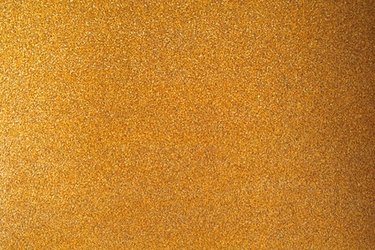Things You'll Need
Dish soap
Coarse sponge
Rags
Towels
Heavy-duty fabric drop cloth
220-grit sandpaper
Scissors
Blue painter's tape
Respirator
Acrylic spray primer
Acrylic paints
Craft brushes
Acrylic spray paint

If you wish to alter the appearance of your vinyl figures by coating them with paint, there are some important preparation techniques you will have to employ before you get started, or the figures will begin to shed paint relatively soon after application. Because vinyl is a non-porous, man-made surface, it is ill-suited for accepting paint. Before paint will stick to your figures, you will have to abrade them using a friction-based method. In addition, you must apply a undercoat of primer, or the paint will peel over time.
Step 1
Wash your vinyl figures with soap. Scrub any grooves and crevices using a coarse sponge. Rinse the figures with a rag or under a faucet. Dry the vinyl figures using a clean towel.
Video of the Day
Step 2
Promote adhesion by scuffing the vinyl figures with a 220-grit sandpaper. Using scissors, cut the sandpaper into smaller pieces if necessary. Do not stop sanding until the vinyl figures feel rough.
Step 3
Move the vinyl figures to a welll-ventilated area. Wear a respirator if you must work in an enclosed indoor area.
Step 4
Place the figures on a drop cloth. Tape over the portions of the vinyl figures you do not want painted.
Step 5
Spray a coat of acrylic spray primer onto the abraded vinyl figures. Hold the can of primer six to eight inches from the vinyl figures. Wait two hours for the primed vinyl figures to dry.
Step 6
Apply acrylic paint to the primed vinyl figures using craft brushes.
Tip
If you wish to coat your vinyl figures in one solid color, you should spray on a coat of acrylic paint in the same manner as you applied the primer.
Warning
Do not paint over your vinyl figures unless you have abraded and primed them first, or the figures will eventually begin to shed paint.
Video of the Day